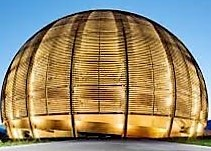Conveners
Wednesday - Session 1
- Anu Kankainen (University of Jyväskylä)
Nucleosynthesis in Type I X-ray bursts (XRB) proceeds eventually through the rp-process near the proton drip-line. Several N=Z nuclei act as waiting points in the reaction network chain. Astrophysical calculations of XRB light curves depend upon the theoretical modelling of the beta decays of interest, with the N=Z and their second-neighbours N=Z+2 being key nuclei in this context.
Several...
Low Mass X-ray Binaries that transiently accrete matter onto their neutron stars are excellent laboratories for studying dense matter physics. These systems go in and out of the quiescence phase over observational timescales of decades. Monitoring the surface temperatures of neutron stars in this phase reveals a great deal of information about their structure and composition. However, to infer...
Approximately 30 stable nuclides on the neutron-deficient side of stability cannot be produced via the same neutron-capture driven mechanisms responsible for synthesizing all other elements heavier than iron. These “p-nuclei” are instead thought to originate from photodisintegration reactions on s- and r-process seed nuclei, which can occur in the extreme high-temperature environments of...
